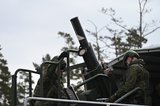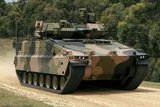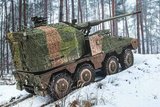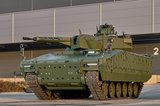US Army awards BAE Systems $123m for thermal weapon sights
The US Army has awarded BAE Systems a $123 million contract for continued production of thermal weapon sights that improve situational awareness and survivability for men and women in combat. The order - the most recent under a five-year, indefinite-delivery/indefinite-quantity contract - increases BAE Systems' total thermal weapon sight contract value to more than $1 billion since 2004.
The electronics technology is used on rifles, machine guns, and mounted weapon systems.
"The Army continues to show its confidence in our performance to provide a quality product for the men and women of our armed services," said Bruce Zukauskas, director of soldier solutions for BAE Systems in Lexington, Massachusetts. "This means soldiers will continue to receive our much-needed thermal weapon sights, which are lighter, smaller, and less expensive than first-generation sights, and thus help them to perform better in their missions."
BAE Systems also recently received a $14 million multi-year contract to provide these sights to the Canadian Army. The widely used thermal weapon sights allow operators of individual and crew-served weapons to see deep into the battlefield in darkness and through smoke, fog, and other obscurants, helping them detect and identify targets at longer ranges. The sights complement current and future infantry armaments, enabling users to overmatch the enemy in all conditions, day and night.
The company produces light, medium, and heavy thermal weapon sights using the company's MicroIR® uncooled infrared sensor technology to generate superior IR imagery without the need for bulky, power-consuming cryogenic cooling equipment.
The company has completed rigorous field testing of its thermal sites, demonstrating their ability to withstand harsh battlefield environments, and to date has delivered more than 80,000 sights to meet urgent Army fielding requirements in Iraq and Afghanistan.
Source: BAE Systems
More from Land Warfare
-
![Romania set to order KF41 Lynx infantry fighting vehicles]()
Romania set to order KF41 Lynx infantry fighting vehicles
Romania’s effort to buy infantry fighting vehicles is expected to include five configurations: a standard platform with a 30mm autocannon, a command variant, an armoured recovery vehicle, a medical evacuation vehicle and a 120mm self-propelled mortar.
-
![Team LionStrike polishes British Army vehicle offering for Land Mobility Programme]()
Team LionStrike polishes British Army vehicle offering for Land Mobility Programme
Team LionStrike has demonstrated its offering for the British Army’s Land Mobility Programme with plans to bid the Chevrolet Silverado and two variants of the platform: the Infantry Squad Vehicle and General Support Utility Platform.
-
![“A new philosophy of defence”: ASELSAN sets out ambitions for the future]()
“A new philosophy of defence”: ASELSAN sets out ambitions for the future
In Conversation: Shephard’s Gerrard Cowan talks to ASELSAN CEO and President Ahmet Akyol about how the business has evolved and expanded over the past five decades, and its aim of becoming a top 30 global defence company by 2030.





















